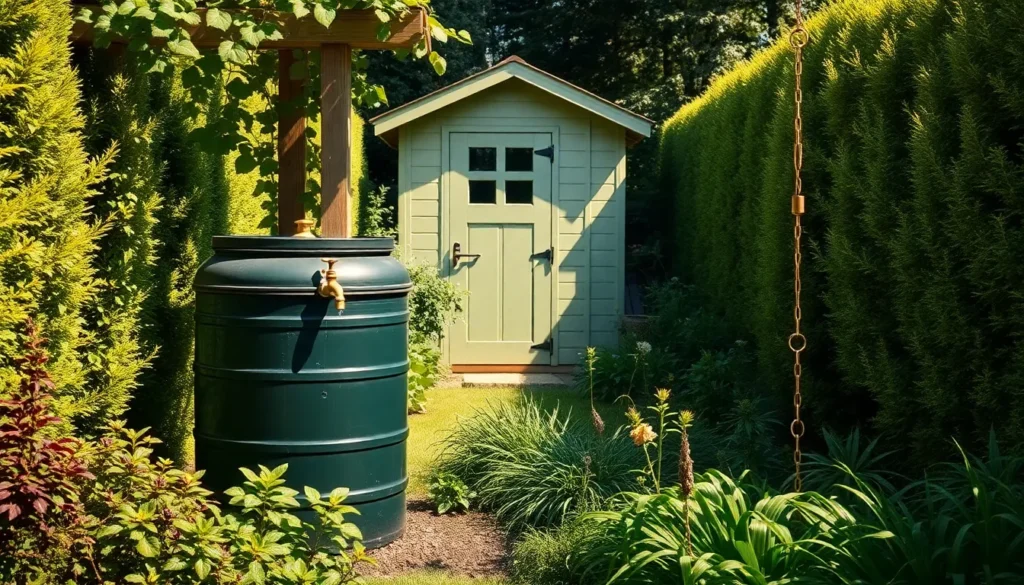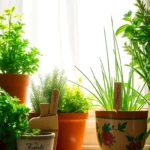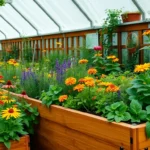Rainwater harvesting isn’t just a sustainable practice; it’s a delightful way to deepen your connection with your garden. Whether you’re just planting your first seed or you’ve been nurturing your garden for years, capturing the rain can transform your green space into a thriving oasis. Our guide, “15 Best Rainwater Harvesting For Gardens,” is here to inspire and equip you with the knowledge to embrace this eco-friendly technique.
Imagine the joy of watching your plants flourish with the water nature intended for them. This carefully curated list offers strategies and designs that will empower you to harness rainwater effectively, reducing water bills and nurturing your plants with the purest form of hydration. By embracing these methods, you’ll discover practical benefits like improved plant health and a more resilient garden ecosystem, making you feel more confident and accomplished with each drop you save.
Rainwater Collection Barrels (Space-Saving Design)
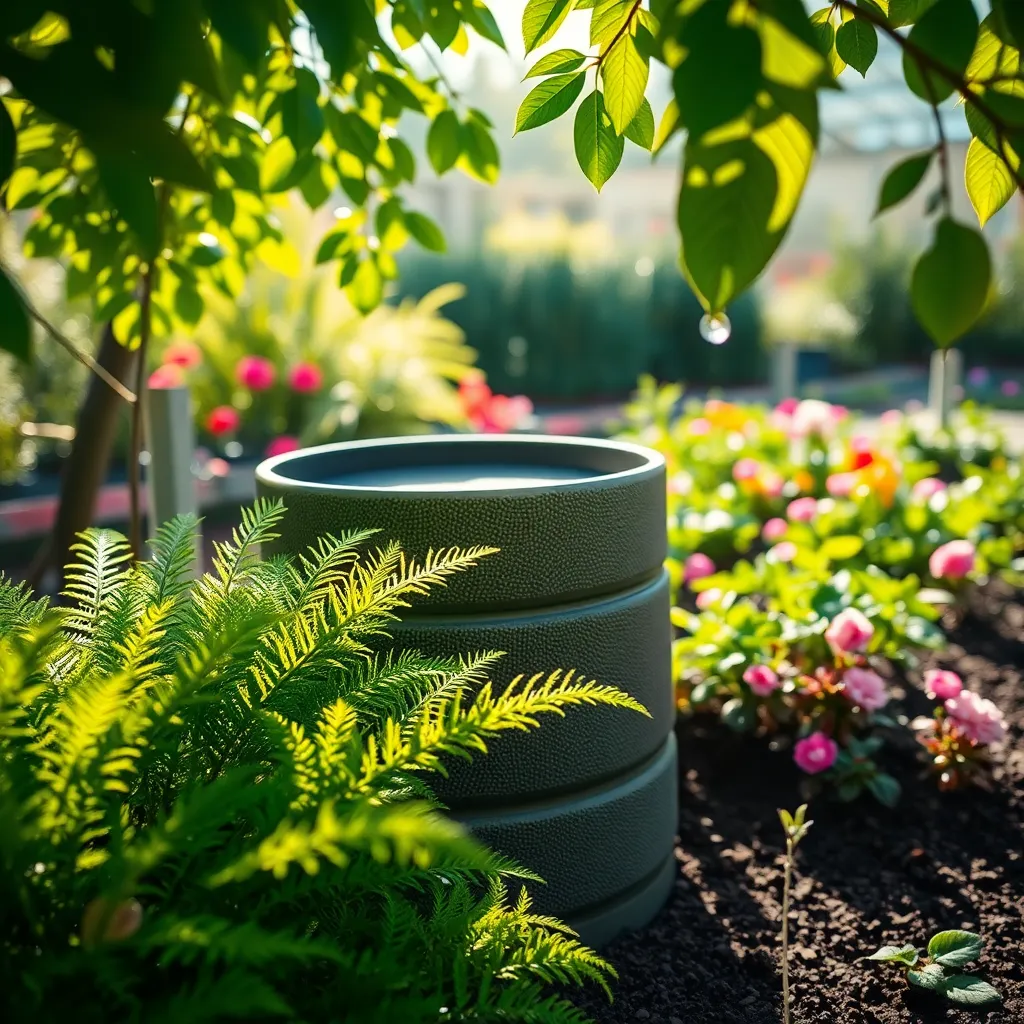
Incorporating rainwater collection barrels in your garden can be a highly efficient way to conserve water and reduce your ecological footprint. These barrels are designed to capture and store rainwater from rooftops, providing a sustainable irrigation source for your plants during dry spells.
For gardeners with limited space, selecting a barrel with a compact, vertical design can maximize storage without encroaching on valuable gardening areas. Many of these space-saving barrels can be easily tucked against a wall or in a corner, making them an excellent choice for urban gardeners.
To get started, consider using a diverter kit that connects your downspout to the barrel, ensuring efficient water collection. Ensure that the barrel is placed on a sturdy, level surface to prevent tipping, and install a fine mesh screen on top to keep debris and insects out.
Regularly checking and maintaining your rainwater barrel is crucial for ensuring water quality and system longevity. During the growing season, use the collected rainwater to deeply water your garden in the early morning, which helps minimize evaporation and ensures that plants receive adequate moisture.
Soaker Hoses (Efficient Water Distribution)
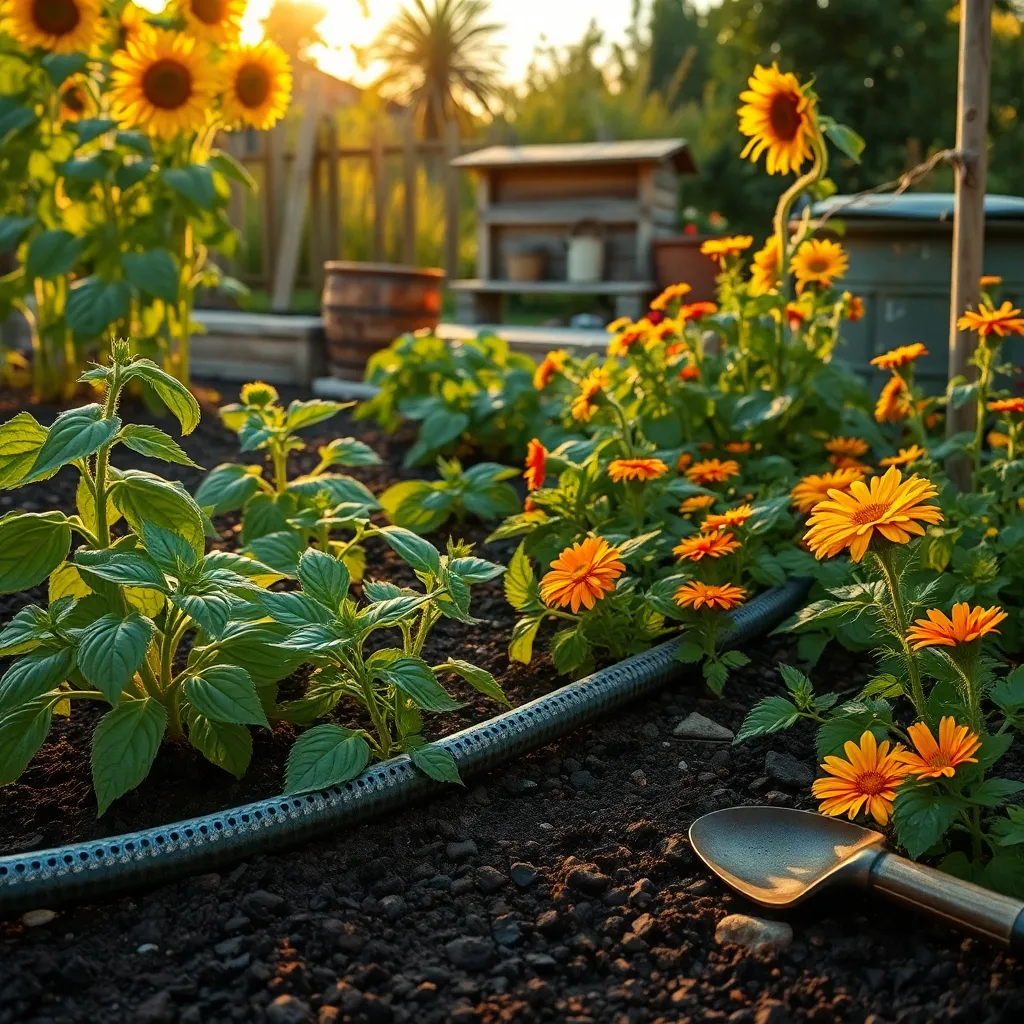
Soaker hoses can transform your garden’s watering system into an efficient, low-maintenance powerhouse. By slowly releasing water directly into the soil, they minimize evaporation and ensure your plants receive the moisture they need at the root level.
To set up a soaker hose system, lay the hoses on the ground around your plants, ideally under a layer of mulch to maximize efficiency. This approach not only conserves water but also helps keep plant foliage dry, reducing the risk of fungal diseases.
For optimal results, connect your soaker hoses to a rain barrel system, which collects and stores rainwater for garden use. This combination allows you to leverage natural resources, making your garden more sustainable and environmentally friendly.
Keep the pressure low when using soaker hoses to prevent them from bursting; this can be achieved by installing a pressure regulator. Beginners will find this method straightforward, while experienced gardeners can integrate timers to automate watering schedules, further enhancing convenience.
Rain Chains (Decorative and Functional)

Rain chains are a beautiful and functional addition to any garden, serving as a visually appealing way to guide rainwater from gutters to the ground or a rain barrel. They not only enhance the aesthetic appeal of your home but also contribute to sustainable gardening by directing water to where it’s most needed.
Installing a rain chain is simple and requires minimal tools, making it an ideal project for beginners. First, remove the traditional downspout from your gutter and attach the rain chain securely to ensure it can handle the water flow during heavy rains.
For gardeners looking to maximize their rainwater harvesting, positioning a rain barrel at the bottom of the chain is an excellent strategy. This setup helps in collecting water efficiently, which can then be used during dry spells, reducing dependency on municipal water supplies.
Advanced gardeners might want to experiment with different rain chain designs, such as cups or links, to optimize water flow and match their garden’s style. Consider using rain chains made from durable materials like copper or stainless steel for long-lasting performance and minimal maintenance.
Gutter Diverters (Seamless Water Flow Control)

Gutter diverters are an excellent tool for managing rainwater flow in your garden, ensuring that water is directed precisely where it’s needed. By installing a gutter diverter, you can capture rainwater and redirect it to specific areas, such as garden beds or rain barrels, enhancing your garden’s irrigation system.
This method is particularly beneficial for gardeners looking to conserve water and reduce their environmental footprint. By controlling the flow of water, you can prevent soil erosion and nutrient runoff, which are common issues in heavy rainfalls.
For beginners, installing a basic gutter diverter system is relatively straightforward and doesn’t require extensive modifications to existing gutters. Experienced gardeners might explore more advanced systems that include attachments for filtering debris, which can keep your water sources cleaner and more effective for plant hydration.
Consider the specific needs of your garden when positioning the diverted water flow. Plants such as tomatoes and peppers thrive with consistent moisture, so directing water to these areas can boost their growth and yield. For those with larger gardens, using multiple diverters can optimize water distribution, ensuring that no section is left too dry or too saturated.
First Flush Diverters (Debris-Free Water Collection)
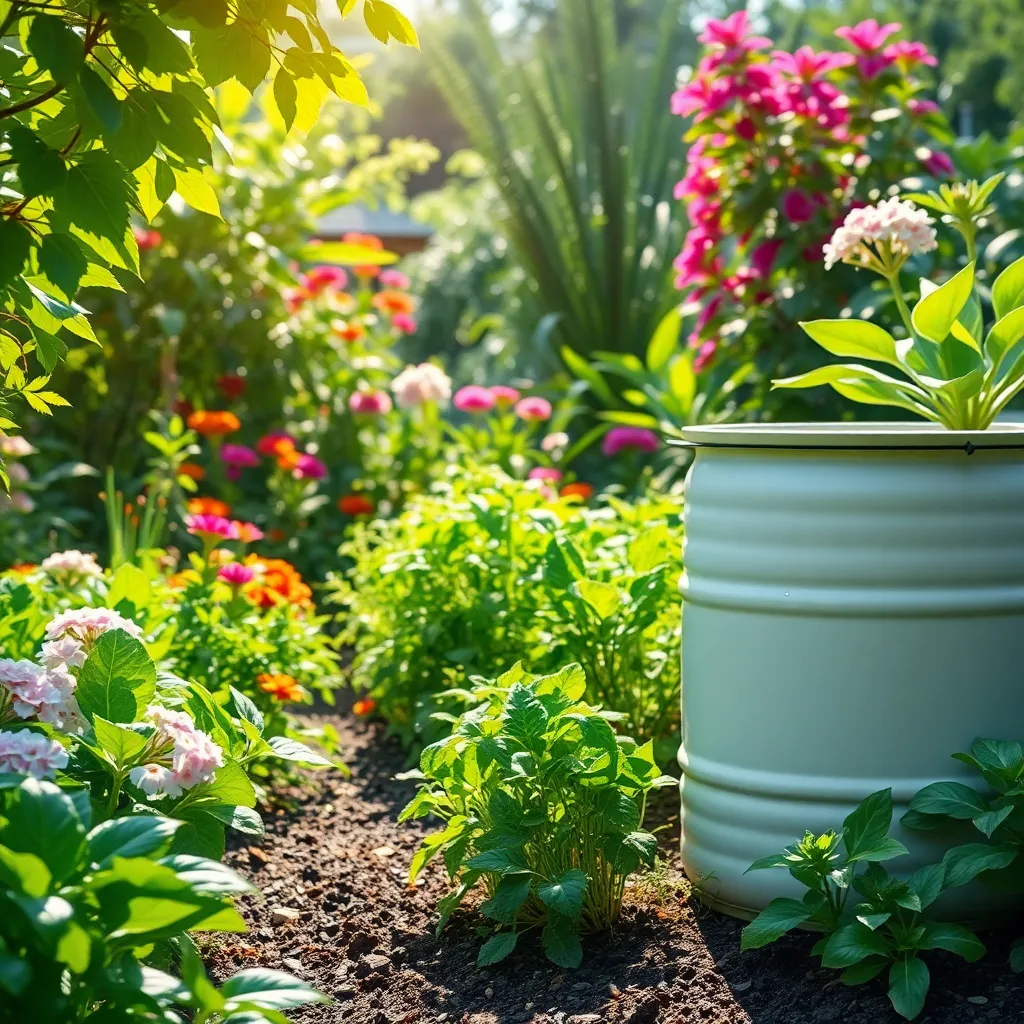
First flush diverters are an essential component of a rainwater harvesting system, ensuring the water collected is free from debris. By automatically diverting the initial flow of rainwater, these systems prevent contaminants like leaves and dirt from entering your storage tanks.
Installing a first flush diverter is a straightforward process that even beginner gardeners can tackle. Position it at the downspout connected to your rainwater collection system, ensuring it captures the first few gallons of runoff before allowing cleaner water to pass through.
Regular maintenance of your first flush diverter is key to its effectiveness. Check and clean the diverter and collection pipe regularly, especially after heavy rains, to ensure no blockages occur and that it operates smoothly.
Advanced gardeners might consider adding a filtration system after the first flush diverter for extra water purity. This added step can be particularly beneficial if you’re using harvested rainwater for sensitive plants or in a greenhouse setting.
Permeable Paving (Natural Water Absorption)
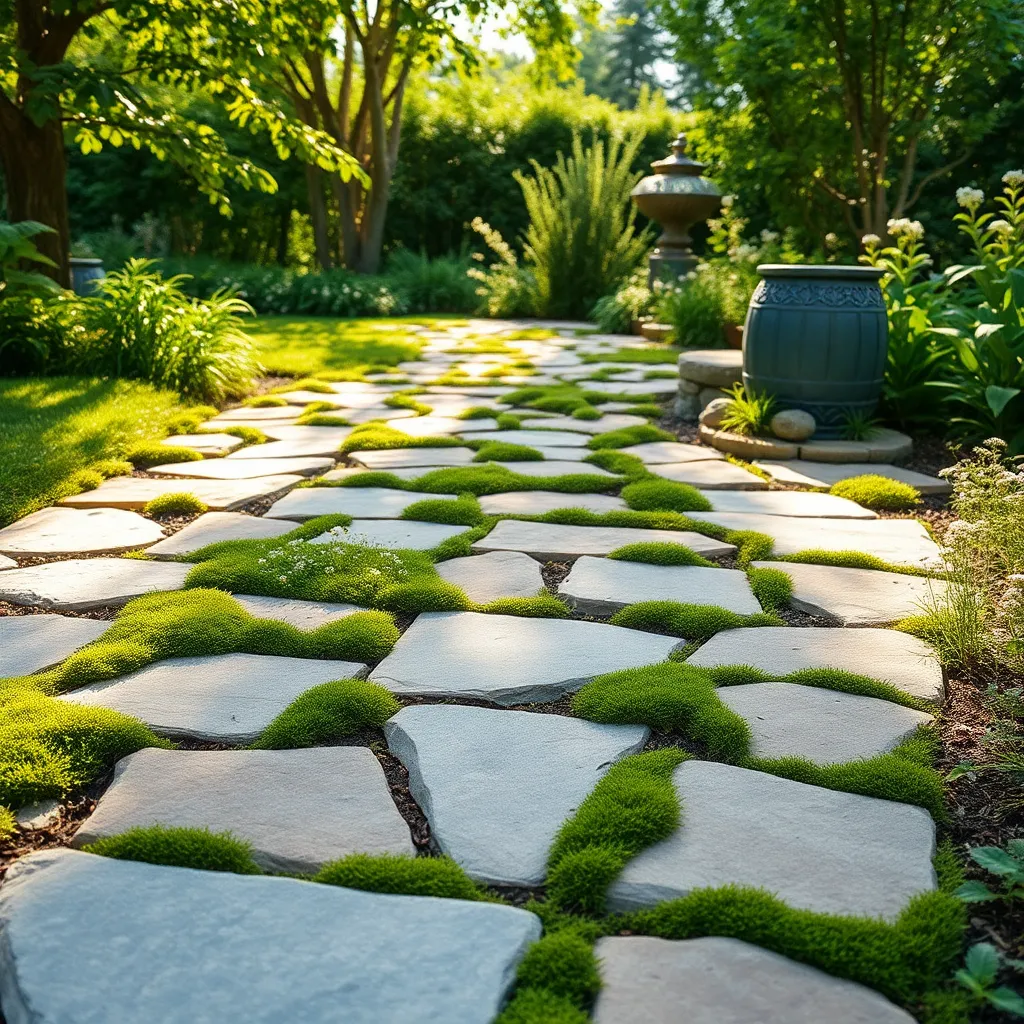
Enhancing your garden with permeable paving is a fantastic way to naturally absorb rainwater while reducing runoff. These surfaces allow water to seep through and replenish groundwater, making your garden more sustainable and environmentally friendly.
Consider installing permeable paving made from materials like porous concrete or interlocking pavers, which are specifically designed to facilitate water absorption. These materials not only help in rainwater harvesting but also reduce the risk of soil erosion and flooding in your garden.
When planning your garden layout, incorporate pathways and driveways with permeable paving to maximize rainwater absorption. This technique is particularly beneficial in areas with heavy rainfall, as it helps manage water more effectively across your garden space.
To maintain permeable paving, ensure regular cleaning to prevent debris build-up, which can block water infiltration. Use a broom or a gentle power wash periodically, and avoid using harsh chemicals that might degrade the paving materials.
Rain Garden Plants (Native Species Selection)
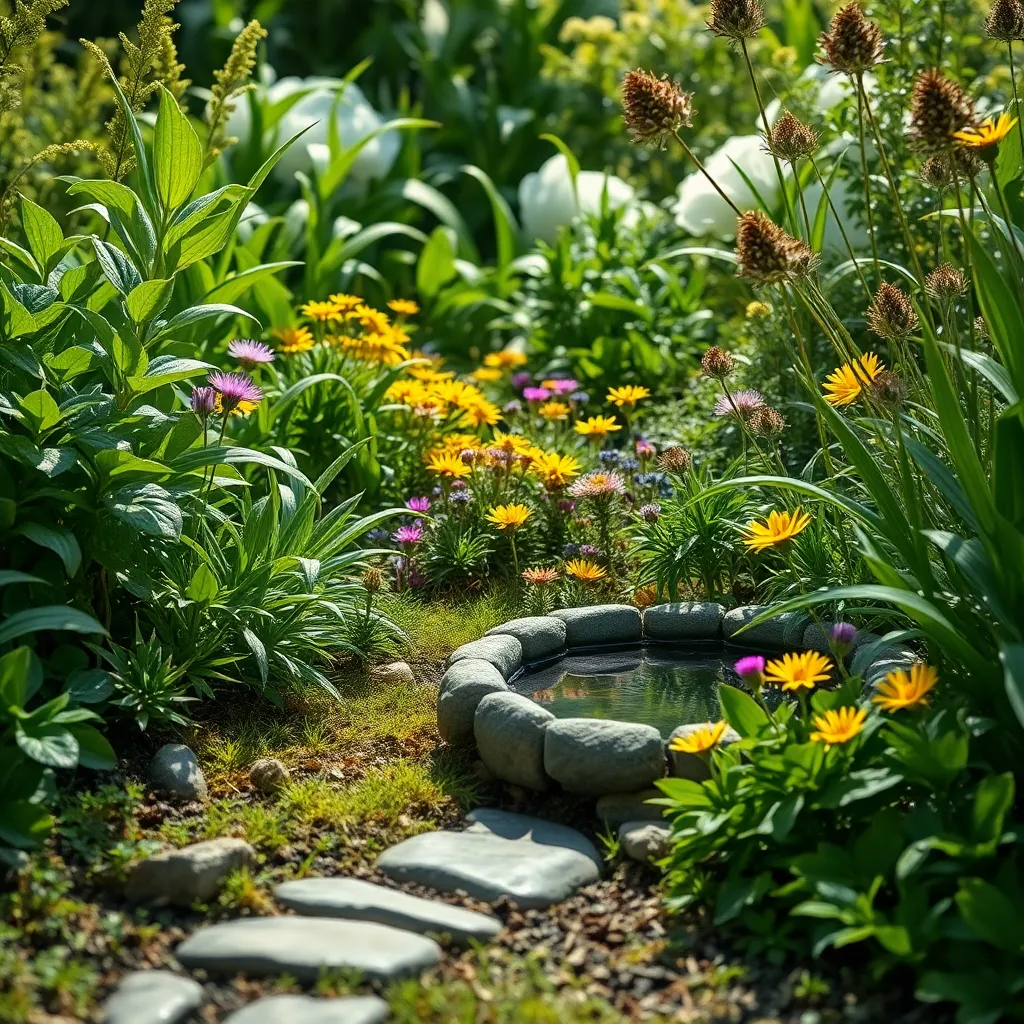
Creating a rain garden with native plant species is an excellent way to manage rainwater effectively and enhance biodiversity. Native plants are well-adapted to local conditions, making them low-maintenance and resilient choices for your garden.
To start, consider incorporating perennial wildflowers such as Black-eyed Susans and Purple Coneflowers, which thrive in wet-dry cycles typical of rain gardens. These plants not only add vibrant color but also attract pollinators, supporting the local ecosystem.
Grasses like Switchgrass and Little Bluestem can provide structure and texture to your rain garden. They have deep root systems that improve soil permeability and help manage excess water effectively.
When planning your rain garden, choose a location that receives runoff, but avoid areas that stay saturated for extended periods. Ensure your soil is well-draining; a mix of sand, compost, and native soil can improve drainage and nutrient availability.
Watering frequency for a rain garden is generally low once plants are established, but supplemental watering during drought periods is beneficial. Mulching around the plants helps retain moisture and suppress weeds, promoting a healthy growing environment.
Downspout Filters (Clog Prevention)
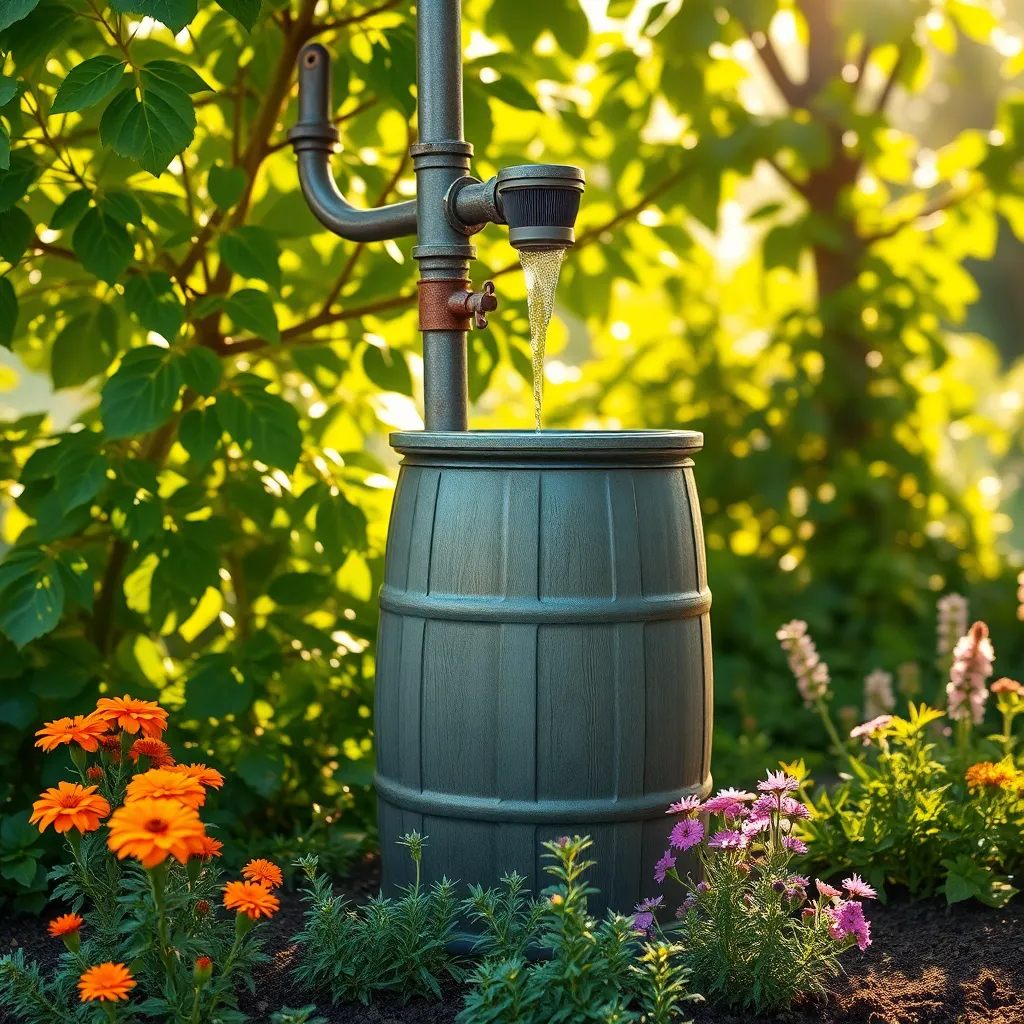
Downspout filters are an essential component for any rainwater harvesting system, ensuring that debris does not clog your collection system. These filters effectively catch leaves, twigs, and other debris, allowing only clean water to flow into your storage tanks or rain barrels.
Installing a downspout filter is a straightforward process that can be accomplished with basic tools. Begin by selecting a filter that fits your downspout size, typically ranging from 2×3 inches to 3×4 inches, and ensure it’s made from durable materials like stainless steel or high-quality plastic.
Regular maintenance of your downspout filter is crucial to keep your system running efficiently. Check the filter monthly, especially during the fall when leaf debris is more prevalent, and clean it by removing accumulated debris to prevent clogs.
For those seeking advanced solutions, consider installing a first flush diverter in conjunction with your downspout filter. This device diverts the initial flow of rainwater, which often contains contaminants, away from your storage tank, ensuring only the cleanest water is collected.
Swales and Berms (Landscaping for Water Management)
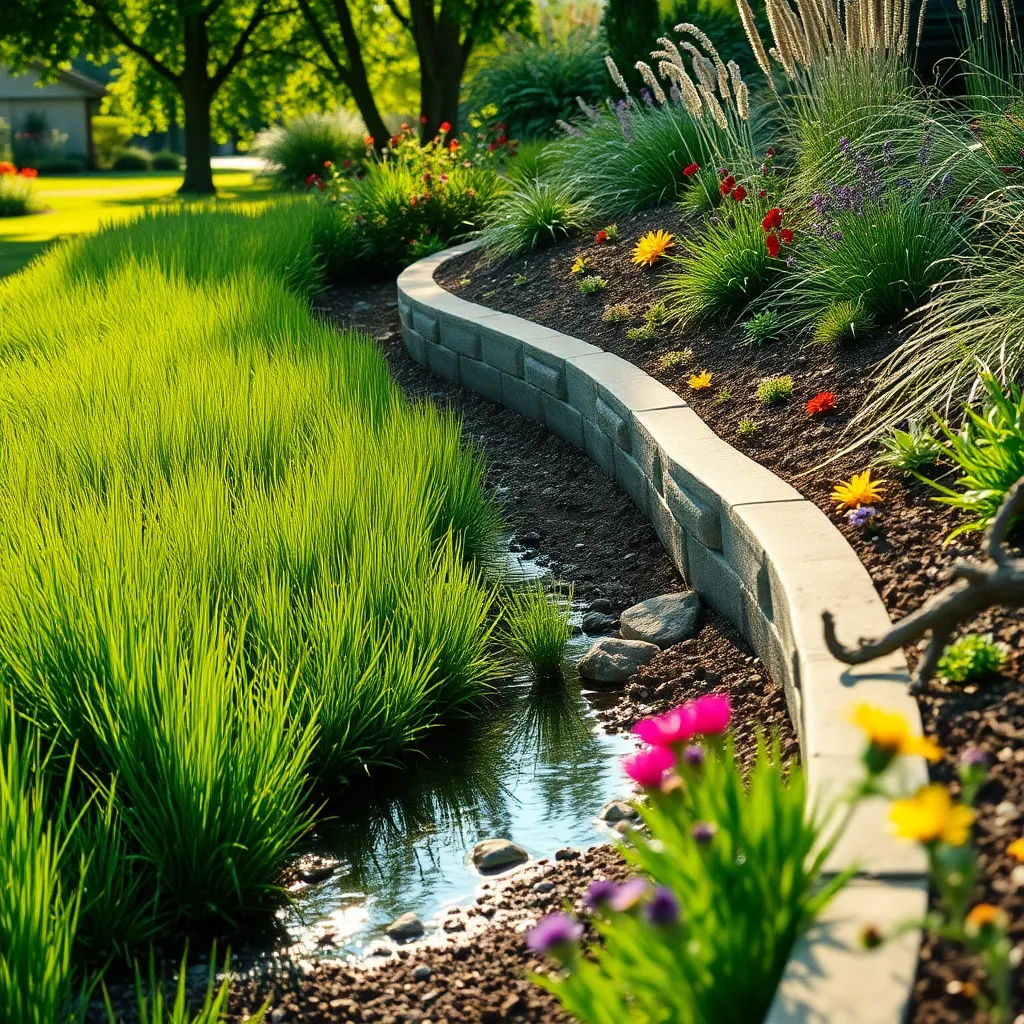
Swales and berms are effective landscaping techniques that can significantly enhance water management in your garden. By controlling water flow and reducing erosion, they help you make the most of rainwater while protecting your plants.
To create a swale, dig a shallow trench on a slope, ensuring it’s level from end to end to collect and redirect water. This technique is particularly useful in areas with heavy rainfall, as it prevents water from pooling around plant roots, which can lead to root rot.
A berm, which is essentially a mound of soil, is often paired with a swale to direct water to desired areas of your garden. Construct your berm using well-draining soil and plant it with deep-rooted species like grasses or shrubs to stabilize the structure.
Consider planting native plants within your swales, as they are well-adapted to local conditions and will thrive with the natural water cycle. Incorporate mulch into the swale to retain moisture and reduce the growth of weeds, providing a more hospitable environment for your plants.
Aquaponics Systems (Sustainable Water Use)
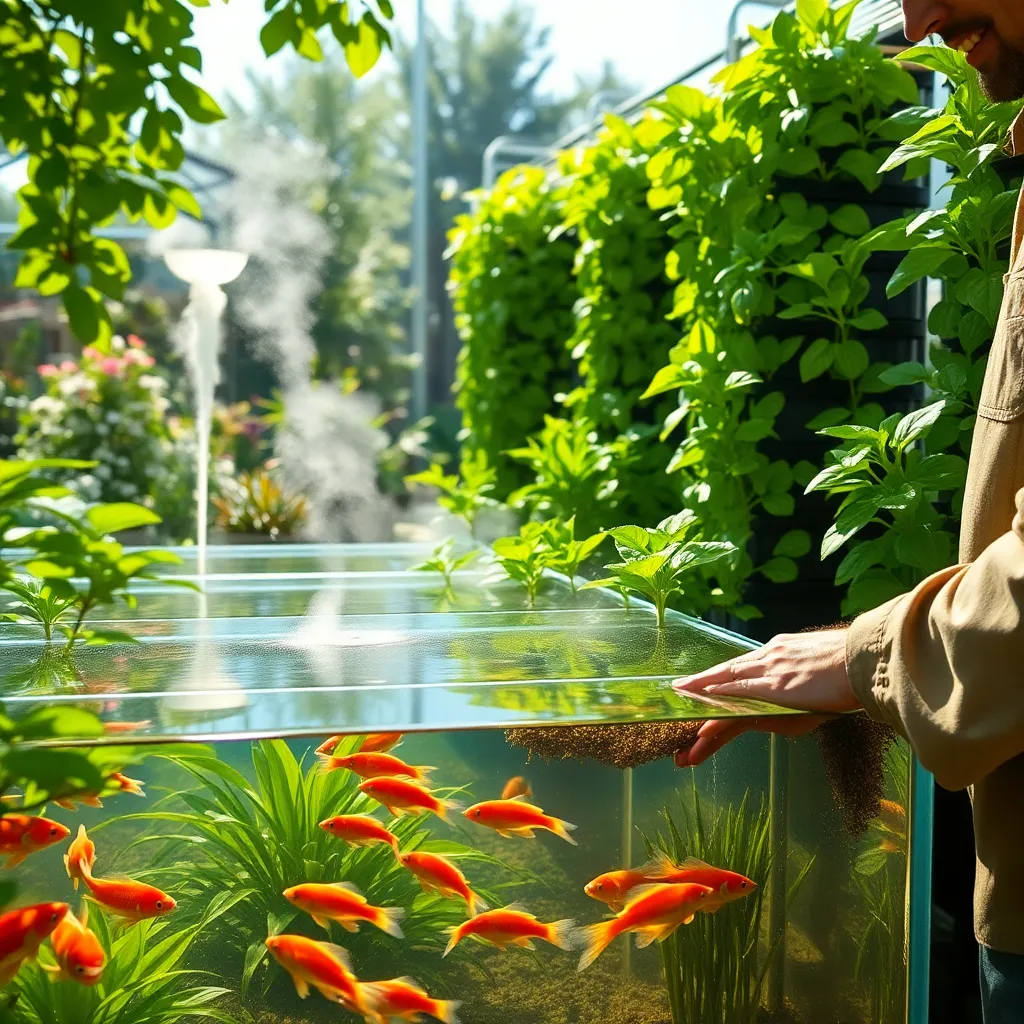
Building an aquaponics system is an innovative way to incorporate sustainable water use in your garden. By combining aquaculture (raising fish) and hydroponics (growing plants without soil), aquaponics creates a symbiotic environment where plants and fish benefit from each other.
To set up a basic aquaponics system, start with a fish tank and a grow bed. Ensure that the water from the fish tank circulates to the grow bed, where plants can absorb nutrients from fish waste, while clean water returns to the fish tank.
Choose plants like lettuce, herbs, and leafy greens, which thrive in aquaponics due to their shallow root systems and low nutrient requirements. For best results, maintain water pH levels between 6.8 and 7.2, and ensure the system receives at least 6 hours of sunlight daily.
Advanced gardeners can experiment with different fish species, such as tilapia or goldfish, to find what best suits their climate and system size. Regularly check ammonia, nitrite, and nitrate levels to keep aquatic life healthy, and consider adding a biofilter to enhance the water quality further.
Watering Cans with Rainwater (Eco-Friendly Approach)
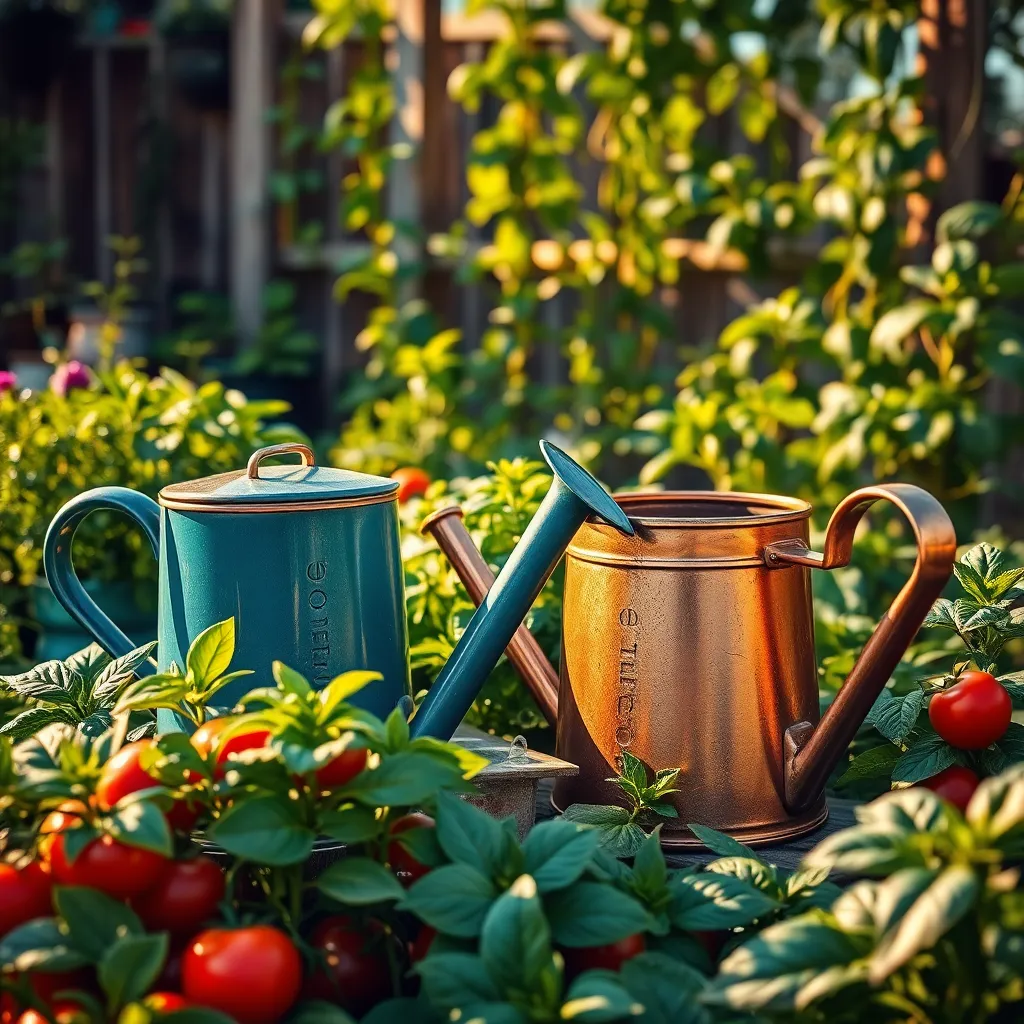
Watering cans filled with rainwater are a simple yet effective way to water your garden in an eco-friendly manner. This method not only conserves water but also provides your plants with a nutrient-rich source, as rainwater is often free of the salts and chemicals found in tap water.
Begin by setting up a rain barrel system to collect rainwater from your roof. Make sure your rain barrel is equipped with a screen to keep debris and insects out, ensuring the water is clean and ready for use in your garden.
Using rainwater in your watering can reduces your water bill and helps promote sustainable gardening practices. Additionally, rainwater has a neutral pH, which is beneficial for most plants, making it an ideal choice for both beginners and experienced gardeners.
For efficient watering, use a watering can with a long spout to reach the base of plants, minimizing water waste. This technique ensures that water is directed precisely to the roots, where it’s most needed, enhancing plant growth and health.
Gravity-Fed Watering Systems (Energy-Free Operation)
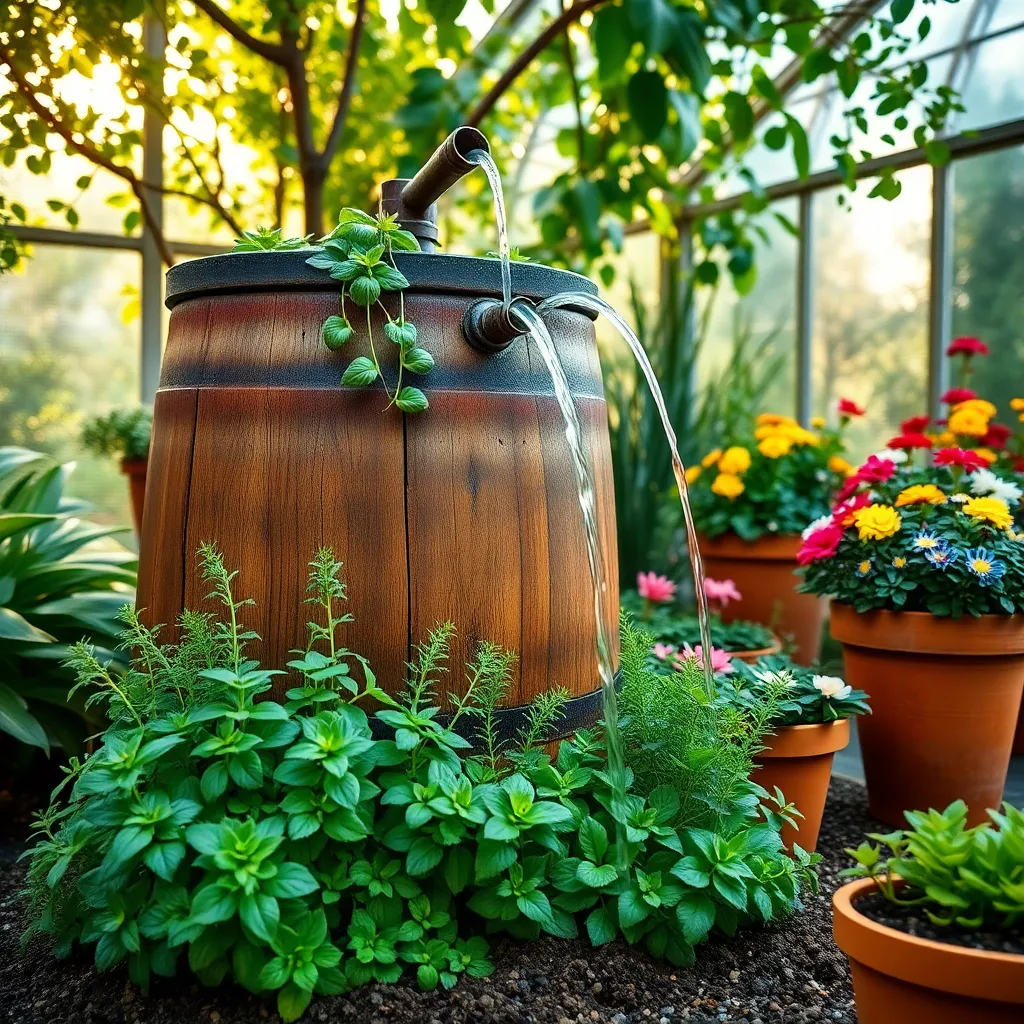
Gravity-fed watering systems are an excellent way to efficiently utilize rainwater in your garden without any energy consumption. By using the natural slope of your garden, you can channel collected rainwater from an elevated tank directly to your plants.
To set up a gravity-fed system, position your rain barrel or water storage tank at a higher elevation than the area you wish to water. Connect a hose or drip irrigation line from the tank, ensuring it has a gentle slope to allow water to flow naturally.
Ensure the tank is securely elevated on a sturdy stand or platform, which can be made from materials like cinder blocks or treated wood. This elevation will provide the necessary pressure to move water through your system without the need for pumps.
For optimal results, consider using a drip irrigation system with adjustable emitters that allow you to control the flow rate to different plants. This is especially beneficial for plants with varying water needs, ensuring that each plant receives the right amount without wastage.
Beginner gardeners can start with a simple hose setup, while more experienced gardeners might explore advanced options like automatic timers for more precise watering schedules. Remember to periodically clean the system to prevent clogs and maintain efficiency.
Rainwater Storage Tanks (Large Capacity)
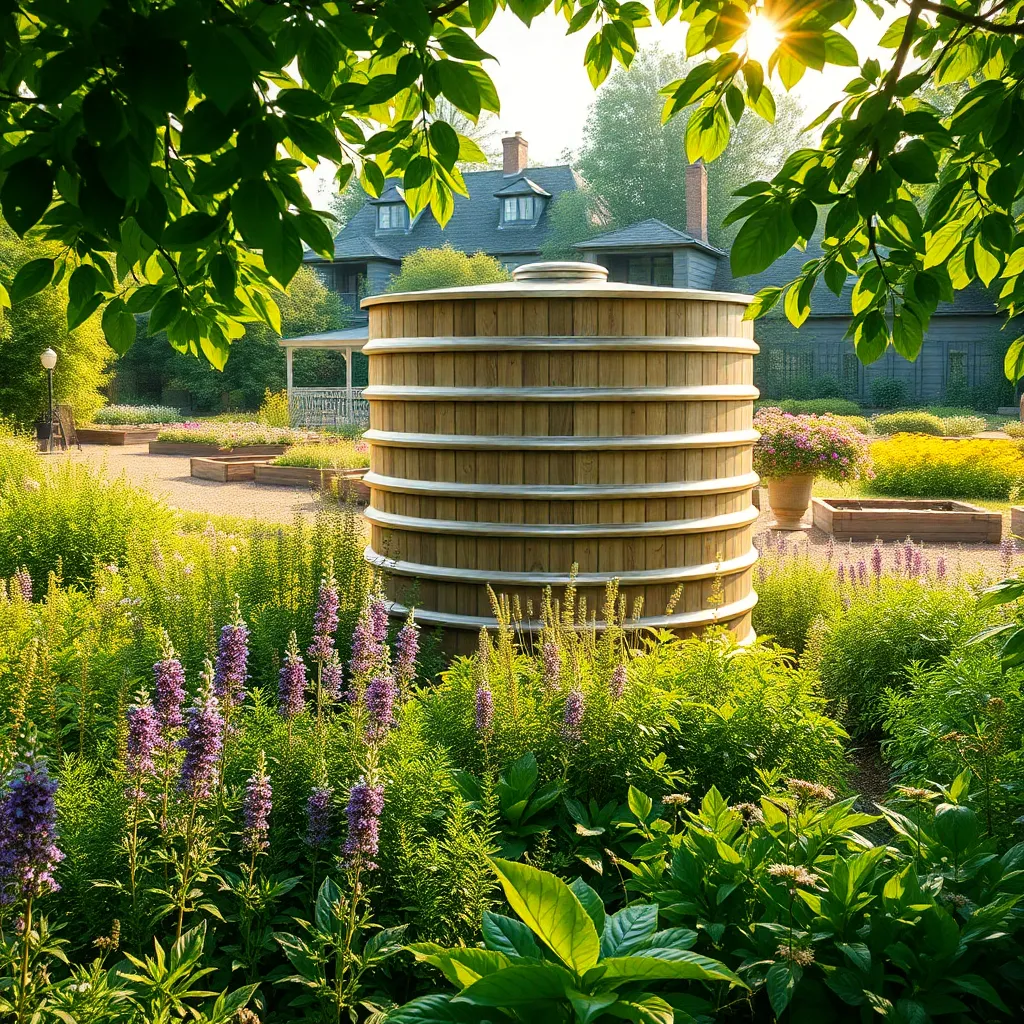
Investing in large-capacity rainwater storage tanks is a practical step for any gardener looking to efficiently manage water resources. These tanks can collect significant amounts of rainwater, ensuring you have a sustainable water supply during dry periods.
When installing a large-capacity tank, consider its location to ensure ease of access for watering your garden. Positioning the tank near your primary garden areas can reduce the need for long hoses and make water distribution more efficient.
For beginners, it’s essential to choose a tank size that matches your garden’s watering needs. A general rule of thumb is to estimate the amount of rainfall in your area and the size of your garden to determine the appropriate capacity.
Advanced gardeners might consider connecting multiple tanks to maximize storage and flexibility. This setup can allow for rotation and maintenance of tanks without interrupting your water supply.
Compost Tea Brewers (Nutrient-Rich Watering)
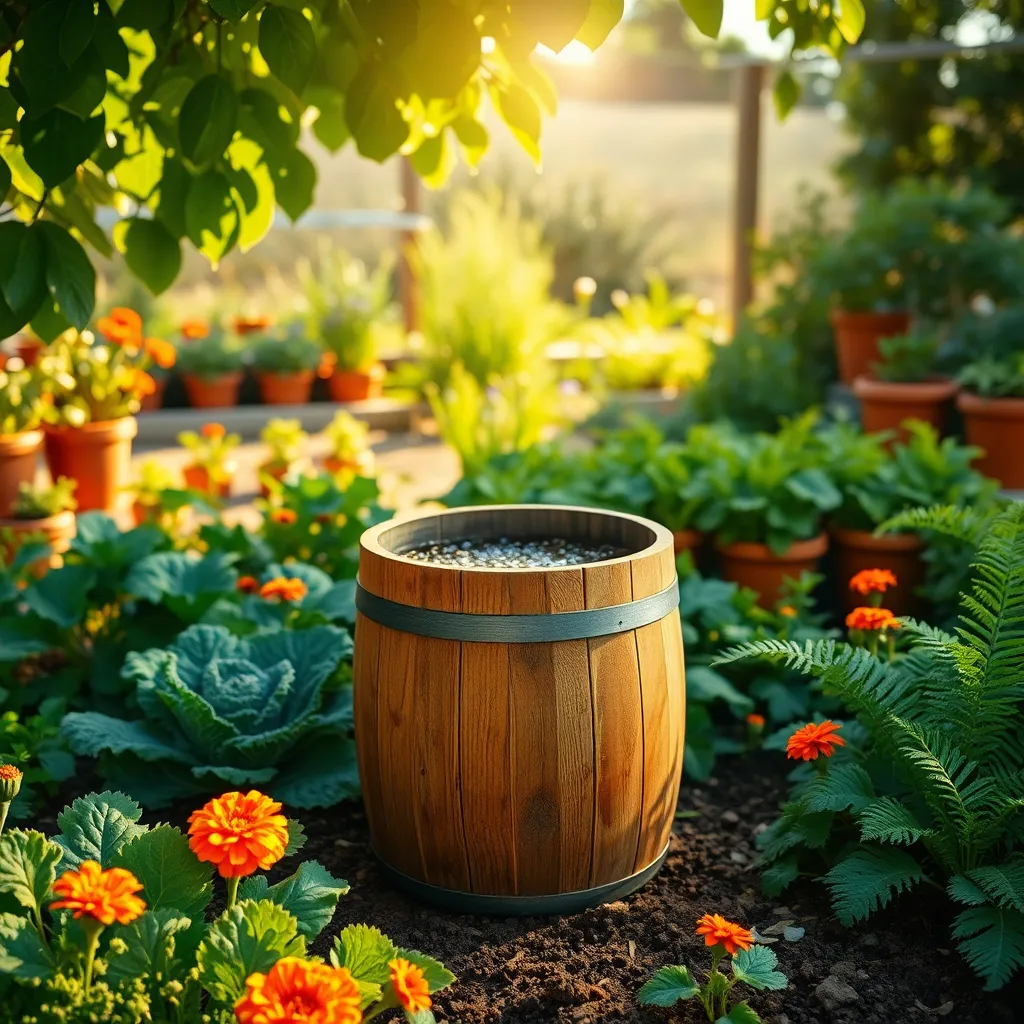
Compost tea brewers offer gardeners a way to create a nutrient-rich solution that enhances plant growth. By steeping compost in water, you extract beneficial microorganisms and nutrients that can be used to invigorate your garden soil.
To start making compost tea, gather a bucket, a porous bag, and high-quality compost. Place the compost in the porous bag, submerge it in the bucket of water, and let it steep for 24 to 48 hours, stirring occasionally to oxygenate the brew.
Once your compost tea is ready, you can apply it directly to your plants or soil. Use a watering can or a spray bottle for foliar feeding, ensuring the leaves and soil are thoroughly covered for maximum benefit.
For best results, apply compost tea in the early morning or late afternoon to prevent leaf burn. This practice can be repeated every two to four weeks, depending on your garden’s needs and the growing season.
Advanced gardeners can experiment by adding other ingredients to the brew, such as unsulfured molasses or seaweed extract. These additions can enhance microbial activity and provide additional nutrients, making your compost tea even more beneficial.
Mulching Techniques (Moisture Retention)
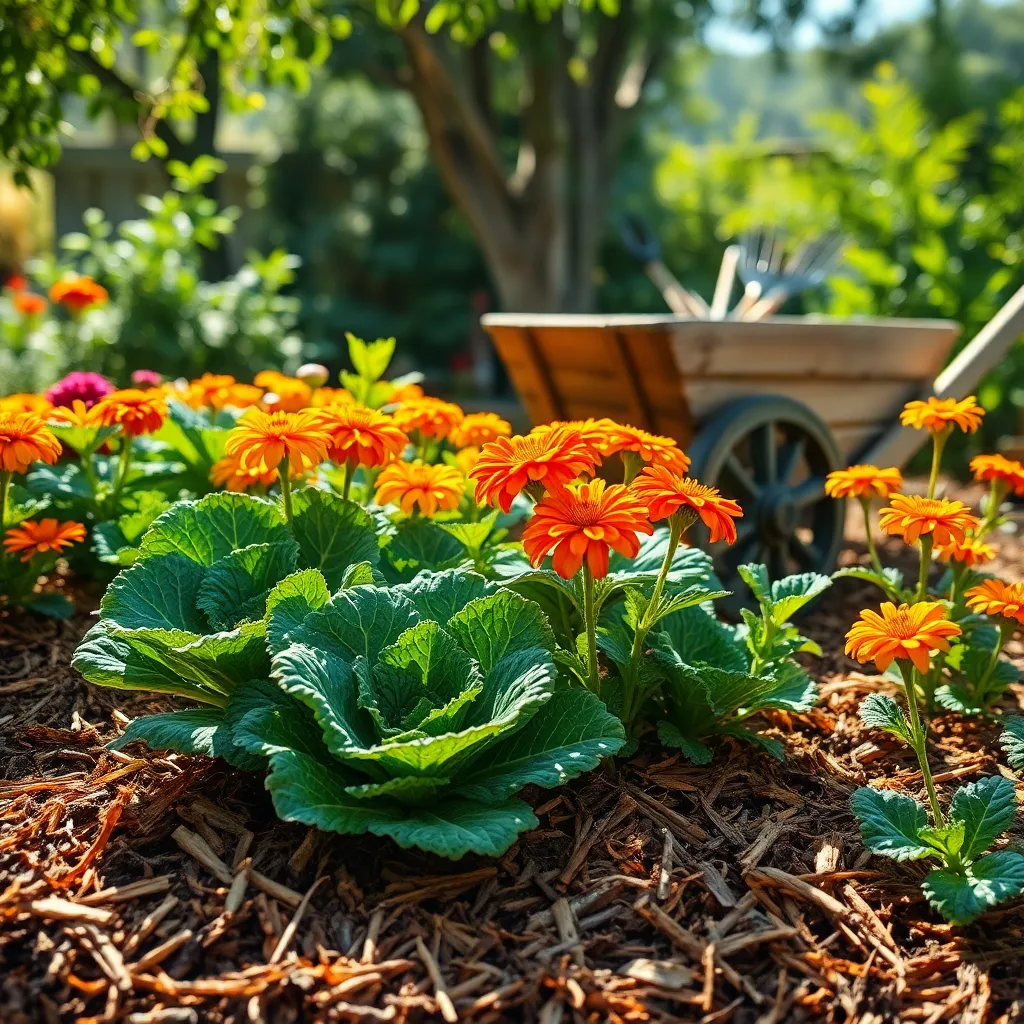
Mulching is an essential technique for moisture retention in gardens, especially after harvesting rainwater. It involves covering the soil surface with a layer of organic or inorganic material to reduce water evaporation and maintain soil moisture levels.
Organic mulches such as straw, wood chips, or shredded leaves not only help retain moisture but also improve soil health as they decompose. For beginners, applying a 2-3 inch layer of mulch around your plants can significantly decrease the need for frequent watering.
Inorganic mulches like landscape fabric or stones are excellent for areas where organic mulch might attract pests. However, be cautious with their use in vegetable gardens, as they do not contribute nutrients to the soil.
For more advanced gardeners, consider using a combination of mulching materials to maximize benefits. Layering organic matter beneath inorganic mulch can provide both nutrient enhancement and long-lasting moisture retention.
- Ensure the soil is moist before applying mulch to avoid trapping dry soil conditions.
- Maintain a mulch-free zone around the base of plants to prevent rot and allow air circulation.
Conclusion: Growing Success with These Plants
In conclusion, nurturing your garden of relationships is much like harvesting rainwater; it requires intention, care, and the right tools. We’ve explored 15 key concepts, including open communication, active listening, mutual respect, shared goals, appreciation, patience, adaptability, trust-building, empathy, personal space, healthy boundaries, conflict resolution, shared experiences, growth mindset, and emotional support. Each of these elements serves as a drop of nourishing water, essential for the flourishing of any relationship.
Now is the perfect moment to put these insights into action. Choose one or two areas where you feel improvement is needed and commit to making small, consistent changes. Perhaps start with active listening during your next conversation or express gratitude to your partner for their support.
Remember, relationships are ever-evolving, and progress is a journey, not a destination. Save or bookmark this article as your handy guide to nurturing and sustaining your connections. As you apply these principles, envision the blossoming of deeper, more fulfilling relationships. Empower yourself with the knowledge that every effort you make is a step towards lasting relationship success. Your garden awaits; let it thrive!

